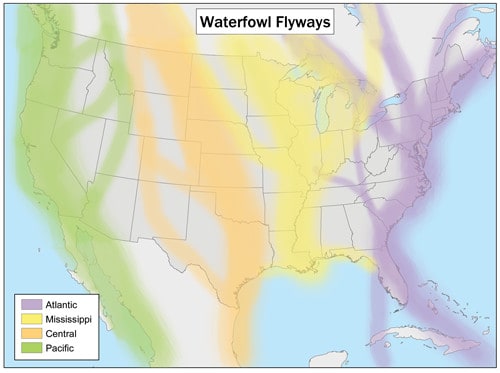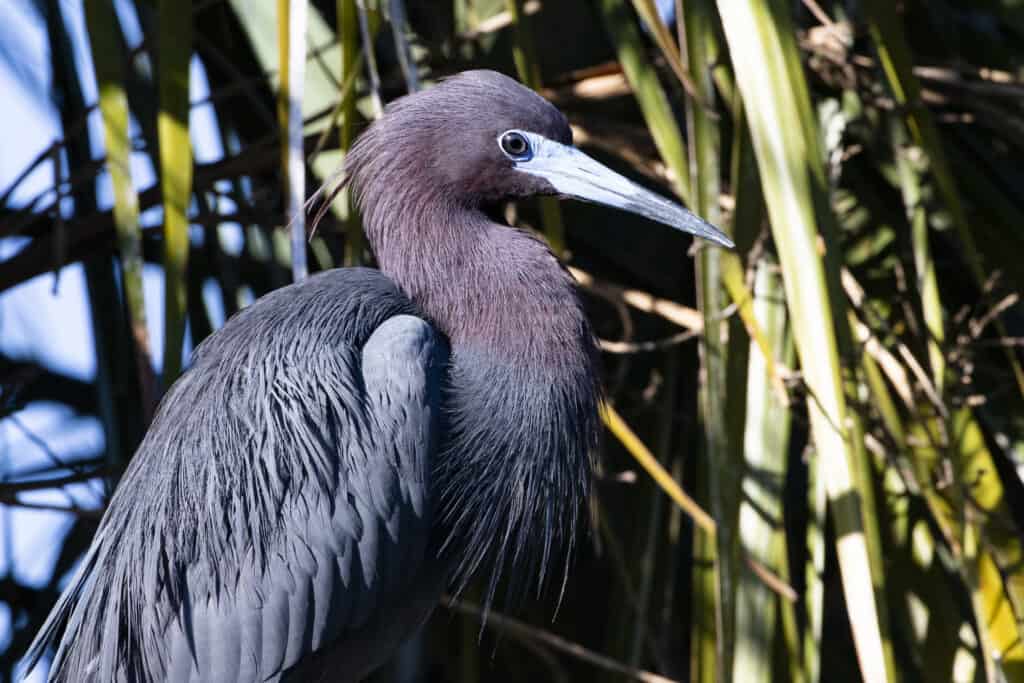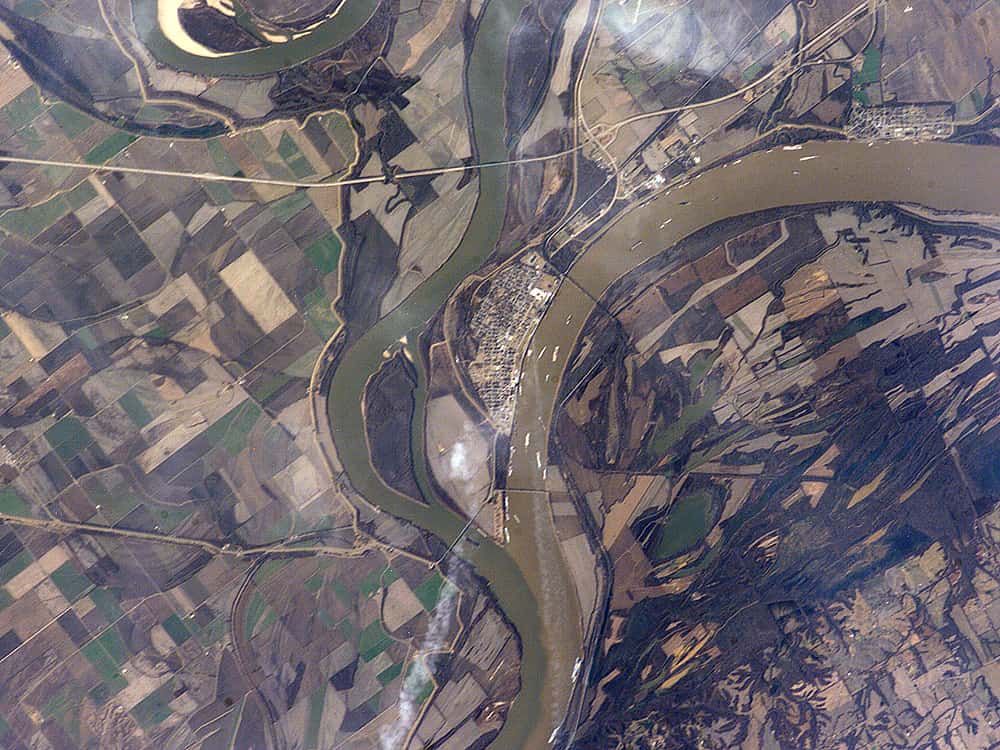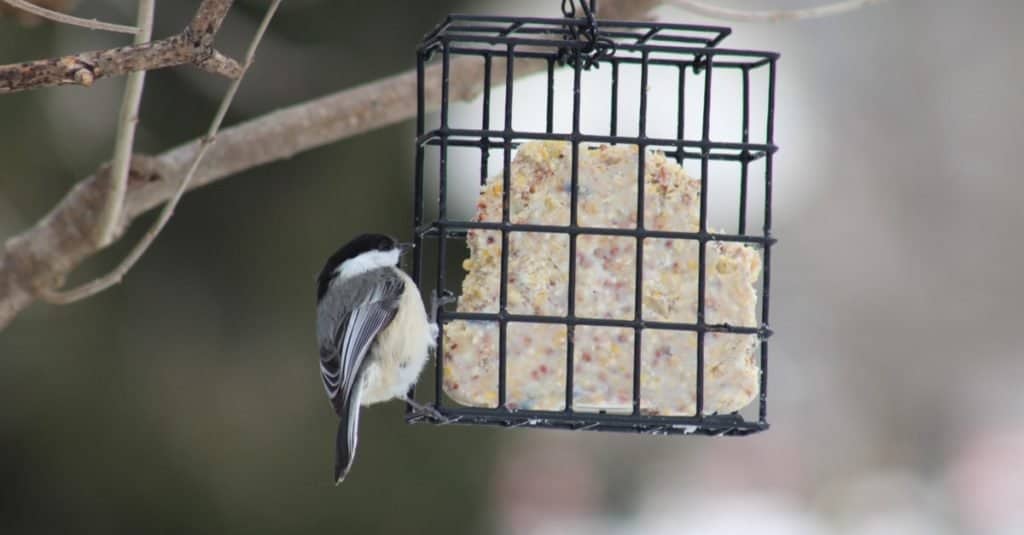A lot of birds follow weather conditions that are ideal for their survival, so they travel south in the Fall and head back north in the Spring. As they do this in North America, they follow one of four paths of least resistance, known as the flyways. What is the Mississippi Flyway? Why it’s important, and the birds that use it are explored below.
What Is the Mississippi Flyway?

The yellow path in the image above is the Mississippi Flyway.
©This image or recording is the work of a U.S. Fish and Wildlife Service employee, taken or made as part of that person’s official duties. – License
The Mississippi Flyway is the most important of the four major migratory routes birds use in North America. It is a path of migration that extends from Canada’s Hudson Bay along the Ohio, Missouri, and Mississippi Rivers to the Gulf Coast. Some birds that travel along this flyway go as far south as Patagonia in South America or up to the northern Arctic Ocean.
This flyway is primarily defined by its lack of obstacles such as mountains, and it’s roughly framed on either side by the Missouri River to the west and the Appalachian Mountains to the east. The Mississippi Flyway also includes the Great Lakes and follows the Gulf of Mexico down into Central America.
In the United States, the Mississippi Flyway loosely includes 14 states. These states are:
- Alabama
- Arkansas
- Illinois
- Indiana
- Iowa
- Kentucky
- Louisiana
- Michigan
- Minnesota
- Mississippi
- Missouri
- Ohio
- Tennessee
- Wisconsin
No one knows how birds know where to go when they undergo their migrations. Most scientists think it’s a combination of things. The positioning of celestial bodies like the stars, moon, and sun plays a role. The Earth’s magnetic field is another factor, and visual recognition of landmarks like rivers plays a part.
Why Is the Mississippi Flyway Important?
The Mississippi Flyway is important because it provides access to vital northern breeding grounds that many bird species rely on for survival. Since the winters in the northern part of North America are brutal, not many predators live in the area, even in the summer months. In the summers, the northern area has many insects and plants that take advantage of the short growing season.
The Great Lakes and rivers that make up the Mississippi Flyway in North America provide vital and continuous freshwater sources to the birds traveling across the continent. Over half of the birds that migrate rely on wetland habitats as they travel, and the Mississippi Flyway provides those needed areas for thousands of miles.
Birds that Use the Mississippi Flyway

The little blue heron is a bird species that uses the Mississippi Flyway.
©iStock.com/Florence and Joseph McGinn
Over 325 bird species utilize the Mississippi Flyway annually, and over 40 percent of all migratory shorebirds and waterfowl in the United States utilize it. However, not all birds follow the same route. Each bird species travels on its path along the flyway and may change a bit yearly based on natural conditions like weather and food availability.
These are some of the species that use the Mississippi Flyway:
- American Oystercatchers (Haematopus palliatus)
- Black Skimmers (Rynchops niger)
- Blue Winged Teals (Spatula discors)
- Bobolinks (Dolichonyx oryzivorus)
- Brown Pelicans (Pelecanus occidentalis)
- Buffleheads (Bucephala albeola)
- Canvasbacks (Aythya valisineria)
- Cerulean Warblers (Setophaga cerulea)
- Clapper Rails (Rallus crepitans)
- Eastern Blue Birds (Sialia sialis)
- Eastern Meadowlarks (Sturnella magna)
- Eastern Phoebes (Sayornis phoebe)
- Grasshopper Sparrows (Ammodramus savannarum)
- Greater Prairie Chicken (Tympanuchus cupido)
- Henslow’s Sparrows (Ammodramus henslowii)
- Least Terns (Sternula antillarum)
- Little Blue Herons (Egretta caerulea)
- Mallards (Anas platyrhynchos)
- Mottled Ducks (Anas fulvigula)
- Northern Shovelers (Spatula clypeata)
- Piping Plovers (Charadrius melodus)
- Prothonotary Warblers (Protonotaria citrea)
- Red Knots (Calidris canutus)
- Reddish Egrets (Egretta rufescens)
- Ring Necked Ducks (Aythya collaris)
- Ross’s Geese (Anser rossii)
- Ruddy Turnstones (Arenaria interpres)
- Sanderlings (Calidris alba)
- Sandhill Cranes (Grus canadensis)
- Seaside Sparrows (Ammodramus maritimus)
- Short Billed Dowitchers (Limnodromus griseus)
- Snowy Plovers (Charadrius nivosus)
- Swainson’s Warblers (Limnothlypis swainsonii)
- Swallow-Tailed Kites (Elanoides forficatus)
- Tennessee Warblers (Leiothlypis peregrina)
- Upland Sandpipers (Bartramia longicauda)
- Western Sandpipers (Calidris mauri)
- Whooping Cranes (Grus americana)
- Wilson’s Plovers (Charadrius wilsonia)
- Yellow Billed Cuckoos (Coccyzus americanus)
Why the Lower Mississippi River Valley Is So Important to the Mississippi Flyway

The Lower Mississippi River Valley roughly starts at the confluence of the Ohio and Mississippi Rivers.
©ISS Crew Earth Observations experiment and the Image Science & Analysis Group, Johnson Space Center, NASA / Public domain – License
Millions of birds rely on the Lower Mississippi River Valley every year. Many birds use it as a food haven and a place to rest, while some use it as their annual nesting location.
Around forty percent of the mallards in North America spend their winters in the Lower Mississippi River Valley. It is the most important spot on the North American continent for wintering ducks, and the birds that travel through this region support a huge wild game hunting industry.
The Lower Mississippi River Valley roughly begins below St. Louis, Missouri, near Cairo, Illinois, at the confluence of the Ohio and Mississippi Rivers. Above this location, in St. Louis, another important confluence between the Missouri and Mississippi Rivers also helps define the start of the region. It continues down through Louisiana until it reaches the Gulf Coast.
As birds travel along the tributaries of the Mississippi along the Mississippi Flyway, they are funneled into increasingly smaller areas as the rivers combine before reaching the Gulf Coast. As a result, there is a larger concentration of important migratory birds along a thousand miles or so of waterway.
Feeding Backyard Birds In the Mississippi Flyway

Suet blocks contain rendered beef fat with seeds or insects that birds enjoy eating.
©Wade Lamb/Shutterstock.com
If your home is within the boundaries of the Mississippi Flyway, there are particular foods you can leave out to attract some migrating birds. Offering these birds easily accessible fresh water and clean food is a treat when confronted with dirty natural sources and exhausting foraging.
Grape jelly is a great choice for birds relying on fruits. It’s especially delectable in early spring before fruit trees have produced any edibles for the season. The birds along the Mississippi Flyway attracted to grape jelly include but aren’t limited to American robins (Turdus migratorius) and house finches (Haemorhous mexicanus).
Suet, or rendered beef fat blocks, are enjoyed by some of the birds that utilize the Mississippi Flyway. Sometimes, suet is packed around seeds or dried insects. One bird that appreciates suet snacks is the bluejay (Cyanocitta cristata).
Mixed seeds and cracked corn are also a favorite treat for many migrating birds, especially if sunflower seeds are in the mix. Some of the birds attracted to seed mixes include dark-eyed juncos (Junco hyemalis), American tree sparrows (Spizelloides arborea), and song sparrows (Melospiza melodia).
The photo featured at the top of this post is © Jim Nelson/Shutterstock.com
Thank you for reading! Have some feedback for us? Contact the AZ Animals editorial team.







